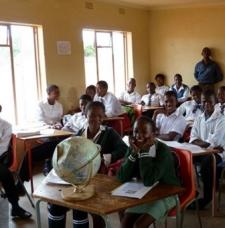
Impala Platinum Lays Out A CSR Template For Peers
The first page of Impala Platinum’s sustainability report makes for distinctly interesting reading. The company cuts right to the chase and sets out the hard data in numbers, rather than waffling about sentiment and aspiration as so many other companies are wont to do.
Alright, Impala operates in South Africa, a country where history dictates that businesses pay extra special attention to the impact they are having on the social and natural environment around them.
But even so, the approach is still refreshing.
The company starts, naturally enough, with production data - from Impala’s production of platinum and palladium in the Bushveld region in north-eastern South Africa, all else springs.
And in 2015 Impala produced 2.6 million ounces of platinum, which generated R32 billion in revenue and allowed the company to pay R217 million in taxes.
Those numbers are laid out in the left hand column of the opening page of the sustainability report, with numbers for previous years occupying respective columns towards the right side, and with the right hand margin occupied by performance indicators, showing percentage improvement or decline.
Thus production, revenue and taxes paid were all up.
But further down the page is where it gets interesting.
Following on from the production data, the next data set relates to people.
The company employed 40,019 people directly at the end of 2015, and an additional 14,729 via contractors. Both those numbers were down slightly on the previous year, although as Impala points out, employee numbers were also impacted by strike activity which is now a regular feature of the South African labour scene.
Perhaps of more long-term significance, the company’s measurement of safety rates showed an improvement on all bar one of the metrics used, although there was a 13 per cent increase in the number of TB cases amongst the company’s employees.
In the next row down, the environment takes centre stage.
In producing its 2.6 million ounces of platinum group metals Impala used nearly 16 million gigajoules of energy, and more precisely used 0.995 gigajoules per tonne of ore milled.
How exactly that compares with peers isn’t know, as such data isn’t normally put into the public domain.
But perhaps Impala is setting a precedent here that will be taken up by peers in future years.
After all, the very next line of the report deals in hard numbers directly with the great issue of the day: in 2015 Impala generated just over 3.3 million tonnes of CO2 emissions, an increase of more than 10 per cent on the previous year.
This naked reporting of CO2 data at the front of a document is to be encouraged, and will eventually become the norm, in the same way that cigarette packets now unequivocally state how much harm cigarettes will do.
Sulphur dioxide emissions are also stated, but unlike those for CO2, were down by 10 per cent year-on-year.
Next, Impala moves on to water. In a country as arid as South Africa the 39 billion megalitres the country consumed is noteworthy in and of itself, especially since that was 14 per cent up on the previous year.
Encouragingly though, the company also managed to recycle over 14 billion megalitres, a seven per cent improvement on 2014.
The data then switches back to people or, as the heading would have it: “Social capital”.
The company spent R83 million on socio-economic development in South Africa and a further R62 million in Zimababwe, where it also has operations. Separately, it also spent R228 million on ameliorating the housing and living conditions of its workers in South Africa, with a further US$6 million also spent in Zimbabwe.
The details of that spend are then laid out in amongst the rest of the report, which runs to an impressive 139 pages and includes details of spending on schools in the Rustenburg region of the Bushveld, on reforestation in Zimbabwe, and on the black empowerment deal with the Royal Bafokeng nation, the biggest single tribal grouping on Impala’s ground.
Impala’s Bafokeng Trust contributes to the social and economic development of the people residing in the Bojanala district of the North West Province, and includes investment into the areas of education, enterprise development, health and sport and recreation.
As a template it’s all pretty impressive stuff, especially at a time when the mining industry is facing severe headwinds.
Whether it will make a significant enough contribution in rebalancing the distribution of wealth in South Africa remains to be seen, though. Hardliners like Julius Malema continue to bang the drum, and companies like Impala may find that they have to do much, much more in order to survive.





